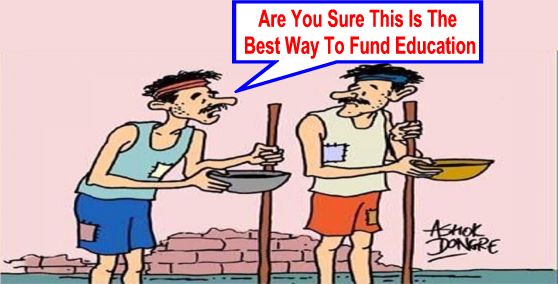How Unequal School Funding Punishes Poor Kids
Our system for funding education is broken, and it’s hurting society’s most vulnerable.
hile a wave of protests, teacher strikes, and student walkouts has exposed the outrageous inequality plaguing the public education system, the budget numbers reveal how unfair funding programs dictate what our children are worth, depending on where they live, the color of their skin, and their families’ wealth.
School funding levels, according to the analysis of the Education Law Center (ELC), vary most dramatically along school-district lines, generally dictated by local property taxes, which renders the education of some wealthy children funded at double the rate of a poor kid’s. There are also stark disparities across state lines, with statehouses primarily managing education policy. Fifteen years after “No Child Left Behind” promised to “close the achievement gaps” in race and socioeconomic background, children in more than one-third of the states are not just stagnating, they’re sliding backward with what the ELC calls “regressive” funding. In 17 states, including relatively affluent Connecticut and Maine, the school systems “provide less funding to their higher poverty school districts, even though students in these districts require more resources to achieve.” In many states, including Michigan and Arizona, poor kids are priced out of educational equity: “only the lowest-poverty districts have sufficient funding to reach national average student achievement outcomes.”
In other states, concentrated in the South, funding is both inadequate and stagnant. The worst-funded states also tend to neglect the basic educational interventions that could close the gaps in academic performance by underfunding early-childhood education, paying their teachers lower wages, and failing to tackle high turnover rates and major gaps in staffing levels. The massive workload on teachers is compounded by low student-to-faculty ratios that keep children cycling through overburdened schools, overworked teachers, and curricula inadequate for meeting basic state standards—which in turn results in year upon year of “underperforming” ratings for the district.
Nationwide, most states maintained “flat” or “regressive” funding patterns that ignore the need for additional funding in high-poverty districts, and just 11 states allocated additional funds to offset the barriers of concentrated poverty. That’s just half the number of schools making the extra effort to tackle poverty a decade ago, as the country was just diving into the Great Recession.
Under the Obama administration, school reformers led a drive toward testing and assessment as the chief measure of academic “achievement,” which, when coupled with the punishing austerity budgets that states imposed on many of their school services and programs, caused schools to become more unequal across the country, between districts, and even within communities. Despite the promises of equity in education, poor families’ children are being left far behind with wildly unequal funding levels: There’s a threefold difference between per-student spending in New York (with more than $18,500 spent on each child—though schools remain highly segregated) and Idaho (with less than $6,300 spent per student). In Utah, poor districts are actually punished financially, receiving 25 percent less funding than per child in a richer neighboring district.
The report also found more subtle ways that underfunding undermines Continue reading: How Unequal School Funding Punishes Poor Kids | The Nation:





